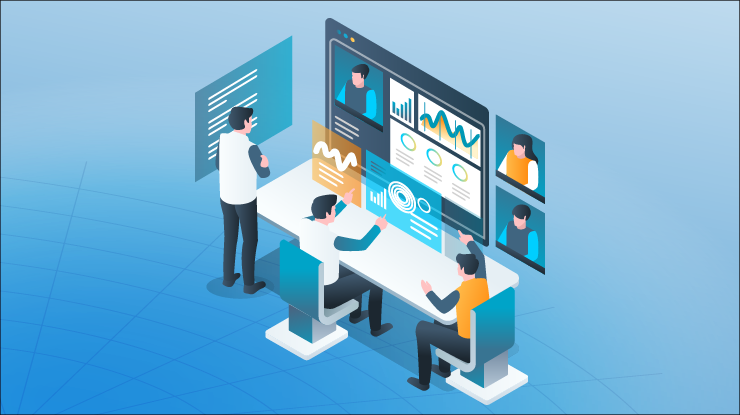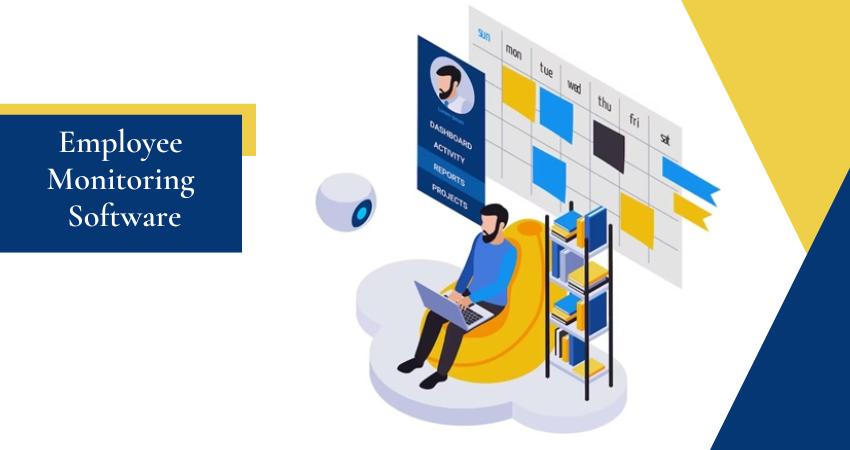New Info To Picking Time Tracking Monitoring Software
What Exactly Is Software For Employee Monitoring And What Do I Have To Know Before I Choose?Software that monitors and track the activities of employees is called the software for monitoring employees. Employers can gather information on different aspects of the behavior of employees including internet use applications, keystrokes, app usage as well as screenshots. The principal goal of the software to monitor employees' activities is to improve productivity, make sure that employees are in conformity with the company's policies, protect sensitive information, and address security concerns. A variety of aspects should be taken into consideration when choosing an employee-monitoring software. Here are the most important things to remember features: Decide on the features your organization needs in accordance with your requirements. Common features include monitoring activity, blocking websites, keystroke recording, tracking of application usage along with email monitoring and reports generation. Make sure that you prioritize features that align with your goals for monitoring.
Privacy and Compliance- Make sure that the software follows legal and ethical guidelines in monitoring employees. You should familiarize yourself with the applicable laws within your jurisdiction. For instance, data protection laws and privacy laws. Think about software that is clear and customizable choices to ensure employee privacy.
User-Friendliness. Consider the user-friendliness and accessibility of the software. A user-friendly interface as well as a simple set-up process can save you time and ease of implementation. Dashboards that can be customized and the intuitive tools for reporting will help you easily navigate the data.
Integration and Compatibility- Verify that the software is seamlessly integrated with your current IT infrastructure and the systems you use like operating systems and email clients, as well as project management tools, and collaboration platforms. Its compatibility allows for seamless monitoring without disrupting your day-to-day activities.
Data Security- Examine the software security measures to ensure the security of data collected. It is vital to employ encryption, secure storage of data and access control. Check that the software provider has strong data protection and security protocols.
Scalability- Think about the ability of the software to support your company's expansion. If you are planning to expand your staff or adding new locations, select software that will easily scale up to meet your changing needs.
Capabilities to Report and Analyze- Check the analytical and reporting capabilities of the program. Find features that offer comprehensive insights into the productivity of employees, their time allocation, and trends. Customized reports and analysis will aid you in making informed decisions and determine areas of improvement.
Customer Support - Evaluate the quality and accessibility of the customer support provided by software vendors. Examine their availability and technical support. If you have a competent customer service staff, they will be able to offer quick help whenever issues arise.
Cost - Take a look at the pricing structures of the program. Knowing the pricing structure as well as the additional costs, such as support, updates or additional features is essential. Be sure to weigh the price of your product against its value and features.
Transparency and communication between employees Create an open and transparent dialogue with your employees about the implementation and usage of monitoring software. Communicate clearly the reason, scope of work, and expectations in relation to the monitoring. Address any concerns they may have and ensure they understand the ways in which they can be assured of their privacy.
Think about these points to make an a well-informed decision. Choose an employee monitoring tool that will meet your company's requirements while still respecting employee privacy. See the top rated employee monitoring company for site tips.

What Are The Functions Of The Employee Monitoring Software?
Software for employee monitoring offers numerous features that can be utilized to analyze and track the behavior of employees. Different software solutions may offer distinct features, however these are the most popular. It provides an in-depth description of how employees utilize their time.
Keystroke logging Keystroke logging records all keystrokes that employees type. It is a great way to pinpoint productivity issues, detect illegal activity, and provide evidence, if needed.
Screenshots & Screen Recordings- Certain software programs capture screenshots or record the screens of employees at regular intervals. This feature can be used to monitor performance, ensure compliance, or to troubleshoot problems.
Internet Usage Tracking - This function is used to track employee Internet activity such as sites visited, search downloads and queries. This feature can help identify excessive non-work-related browsing, which could pose security risks, and policy violations.
This feature lets you monitor the apps employees use while at work. It allows you to determine which applications are the most popular and can help determine excessive or inappropriate applications.
Email Monitoring - Email monitoring gives employers the capability to monitor employee emails including messages received and sent, attachments and email content. It helps to ensure the compliance of policies of the company, stop data leaks and also investigate any suspicious behavior.
File and Document tracking- This feature tracks access to, modifications of, and transfers. It helps protect sensitive information and monitor collaborative work on documents and ensure compliance with the security guidelines for data.
Remote Monitoring- Remote monitoring capabilities enable employers to monitor employees who work remotely or work from different locations. Employers can track employees' activities and ensure their productivity regardless of the location they're physically.
Productivity AnalysisSoftware for monitoring employees often includes productivity analysis features that offer insight into work patterns of employees, time allocation, and overall levels of productivity. These analyses may help find areas for improvement and help to optimize workflow.
Reporting and Analyses - Robust analytics and reporting features create detailed reports and visualizations on the basis of data that has been collected. These reports can provide valuable insight on employee performance, time management and resource allocation.
Software that offers features to manage compliance and policies can ensure that a company's policies and regulations are met. Employers are able to establish and enforce policies pertaining to acceptable computer usage, internet access, and data security.
Alerts and Notifications - Alerts and notifications alert managers or employers when certain events or activities occur. For instance, they could alert about excessive internet usage attempts to access restricted websites or suspicious behavior.
It is essential to know that these features can differ according to the software you choose. When selecting a software, look for features that match your monitoring needs and comply to local ethics and legal guidelines. Take a look at the recommended employee monitoring software for blog recommendations.

What Is The Compliance And Privacy Law Regarding Employee Monitoring Software?
Respecting privacy and compliance laws is a critical component of software for monitoring employees. Here are a few methods that employee monitoring software adheres to privacy and compliance regulations regardless of the fact that the requirements for compliance vary between different jurisdictions. Consent and notice- Many jurisdictions demand an informed consent from employees, and require them to be notified of monitoring activities in advance. Monitoring software for employees usually includes tools that permit employers to communicate their monitoring policies to employees in a clear manner. This may include sending written notifications, getting consent through consent forms, and implementing an employee guide that outlines the monitoring practices.
Transparent Monitoring Policies: Transparent monitoring guidelines ensure transparency by making employees aware of what data is being collected, the reasons it's being monitored and the extent of monitoring. Clear and comprehensive policy help employees understand monitoring boundaries and their rights to privacy.
Data Minimization- To comply with privacy laws employees monitoring software usually employs data minimization principles. It means that only the necessary data will be kept and stored. Data that is irrelevant or overly large are discarded. By restricting data collection to only the necessary for monitoring purposes This software minimizes privacy risk and promotes compliance.
Anonymization and Aggregation: Some software that monitors employees anonymizes or aggregates data to protect employee privacy further. The data collected is anonymized to eliminate personally identifiable information. Aggregation is the process of combining data from many employees to give insights on a group level without singling out individuals.
Secure Storage of Data and encryptionSoftware for monitoring employees prioritizes the safety of data it collects. Data is protected with secure storage practices for data and encryption methods. Data security is essential when it is in transit and at rest.
Access Controls, Restricted Permissions In order to make sure that the company is in compliance with laws employee monitoring software offers granular permissions and access controls. Employers can restrict access to monitor data only to the individuals who require it for legitimate reasons, such as HR personnel and administrators designated by the company.
Rights and Remedies for Employees Rights and Remedies - Respecting employee rights is an important aspect of adhering to privacy and compliance regulations. Many employee monitoring programs include options that let employees access their own personal information and make corrections, or even make complaints. Employees have the option to pursue recourse in the case of a privacy breach and exercise their rights.
Compliance with Data Protection Regulations- Employee monitoring software is designed to comply with the applicable regulations on data protection like the General Data Protection Regulation (GDPR) in the European Union or the California Consumer Privacy Act (CCPA) in the United States. Compliance requires implementing the necessary measures to safeguard the rights of data subjects and guarantee lawful processing.
While software for monitoring employees may support compliance efforts in some instances, it's equally important to seek legal advice from professionals to stay up-to-date on the relevant laws and regulations within their respective jurisdictions. To ensure compliance with privacy and compliance laws an extensive approach is needed that goes beyond the software. It includes clear policies and education for employees, as as ongoing compliance monitoring. Have a look at the most popular time tracking monitoring software for blog recommendations.
